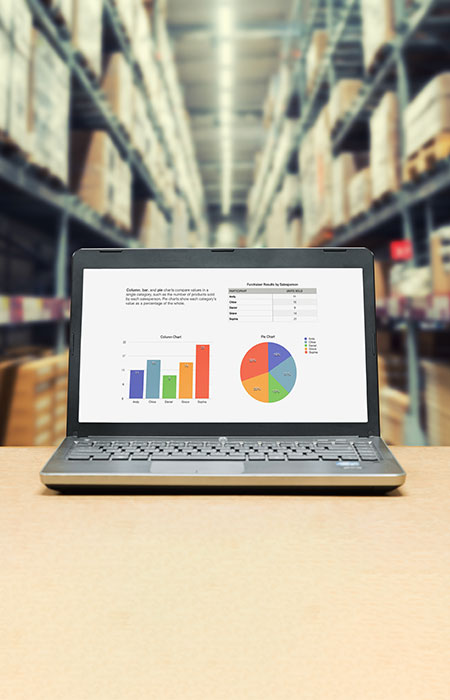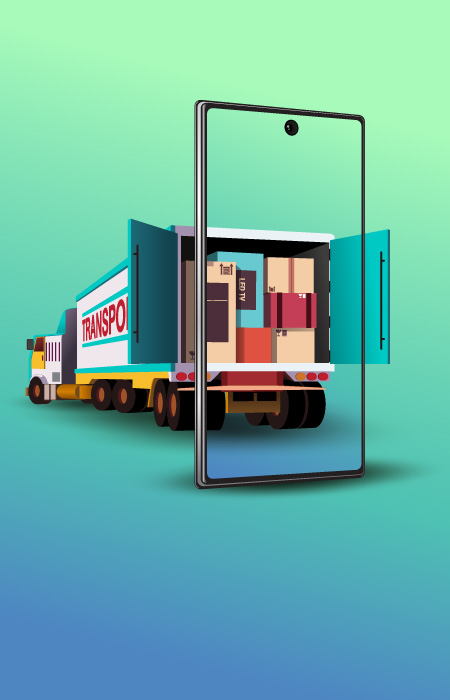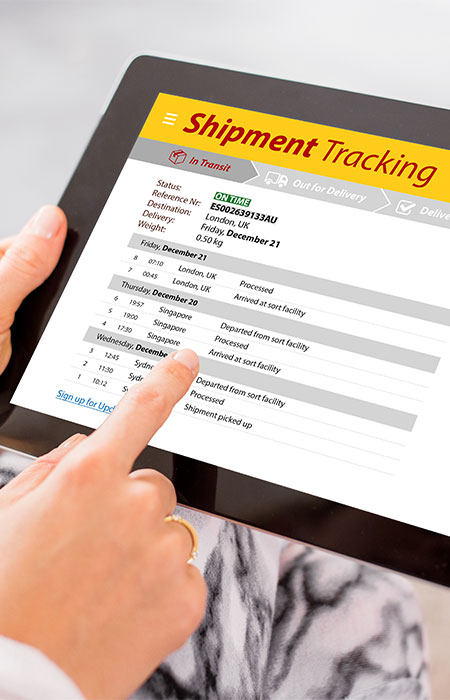Introduction
Global trade is transforming radically, and Industry 4.0 revolution is upon us. No sector is immune to the disruptions that technology brings, and the Logistics industry is no different. The expectations have changed, especially regarding instant and real-time visibility of shipment information and speed of delivery. In order to stay ahead of the curve, shippers, consignees, carriers, logistics service providers have to gauge the changing trends in the industry and make proactive and informed decisions. The success in all of this boils down to one key component – Data.
Data, as rightly claimed, is the new oil. Industries today are thriving on it, and it is shaping how businesses are managed in modern times. However, distributed data sources make it cumbersome to use the information for analysis seamlessly. The presence of data in various schemas increases the time elapsed to fetch data as one needs to connect multiple data sources to get the required set of fields needed to perform further analytical tasks.
Enabling Insights Using DataOps
DataOps is a collaborative data management practice focused on improving the communication, integration, and automation of data flows between data managers and data consumers across an organization. It streamlines information, reduces the time spent in fetching data and what you end up with is enhanced business intelligence, suitable to make critical business decisions. Figure 1 below provides the workflow for DataOps.
Read this whitepaper to learn more about DataOps.
For a third-party logistics service provider, such data sources would be the Transportation Management System (TMS), Fleet Management Systems, Fleet Routing Systems, Order Management System, Dispatching, Routing, etc. The data from these systems are loaded into a data lake for modeling to generate business insights
Now that we have structured and processed data, it can be leveraged using Artificial Intelligence and Machine Learning models to gain a competitive advantage and optimize logistics workflow. Following are five use cases and areas where machine learning has showcased substantial potential for logistics.
1. Improving Truck Load Utilization Through Continuous Moves
The transportation sector often suffers from poor capacity management, which results in drivers driving empty miles on one of the legs. This, in turn, leads to driver inefficiency, higher handling costs, congestion, and fuel usage, to name a few. Through continuous moves, the empty miles can be eliminated as the same vehicle can be assigned a load to transfer on their return leg.
Successful implementation of this aspect has been showcased by the Blume Global platform through their Street Turns feature. This feature leverages AI to optimize the truck’s capacity usage, thus ensuring efficient use of driver hours of service and reduction of fuel consumption and deadhead distance.
Figure 2 shows a simple process, where the truck is pretty much empty for the return journey from B to A and A to C. However, using AI tools, historical data gathered for various loads can be utilized to generate leads of potential loads in areas near drop-off locations, and carriers can be assigned loads, which are often managed by brokerage services that act on behalf of interested shippers. This will lead to improved truck utilization as the empty mile in Figure 3 is optimized to B to C only.
2. Carrier Recommendations Based On Shipment Characteristics Using ML Models
We can evaluate carriers’ performance based on linear factors like on-time arrival, cost/unit weight, time to ship, etc. This is a very generic method of allocation of load to the shipper. The efficient method is to schedule a shipper based on the load type, cost, and available time factors. This is fathomable and feasible if we develop a continuous DataOps pipeline with an artificial intelligence model enabled on it. ML algorithms such as Gradient Boosting or Random Forest can train the model over the training set of the historical data. To reduce bias, the results can be aggregated from several iterative output models. The outcome is a list of carriers ranked in the order of their f1-score. It was observed that among all the features or factors dialed in, quantity distribution, weight distribution, total distance, and geographical locations tend to stand out as decisive features over time.
3. Reducing Dwell Time Through Image Processing
Inefficient yard or dock management often results in drivers waiting for hours to get the shipment loaded or unloaded. This eats into their hours of service, which impacts revenue generation for carriers, creates congestion, and sometimes even results in accidents and fatalities on the road due to the driver’s aim to compensate for the lost time. This can be avoided with the help of the image recognition aspect of ML, where docking station images captured can be fed as features or input data to machine learning models to identify docking station utilization.
A company called, Locix has launched a product called Smart Dock that aims to use inward and outward wireless cameras called HD Vision Censors that, when connected to artificial intelligence platforms, help in tracking and analyzing activities and send alerts when necessary to supervisors. This not only solves the issue of bridging the communication gap but also allows warehouse management to use this data to efficiently manage their resources and prioritize activities based on the traffic at the yard throughout the day. This will also help in identifying peak hours, and yard managers can take proactive measures to seamlessly transition shipments during such rush hours.
4. Arrival Time Prediction Using Environmental and Behavioral Patterns
With OTIF (On Time in Full) been a critical KPI in the logistics industry, to the extent that failure to achieve it incurs a significant penalty. Receivers must get accurate information about the arrival of the consignment. Even though real-time visibility is a bare minimum expectation among customers today, there is still a lot of inaccuracy in the ETAs committed. Schneider, a noted carrier service provider, leverages artificial intelligence through its proprietary feature ETAi to provide an accurate ETA to end customers. The technology factors in weather updates, traffic congestion, driver behavior, and hours of service to develop accurate ETAs without any manual intervention. This also saves drivers time as they can carry on their journey without pulling over to update these factors. The ETA updates are near real-time, and it allows end customers to be in sync with the drivers. Schneider achieved 26% improvement in ETA estimation through this technology, and the industry has rewarded them for their innovative approach to provide accurate information of the transit.
5. Predicting Accident-prone Areas for Safer Transit
Transportation of goods isn’t often seamless, and the route is several perilous junctures due to which we have accidents that result in damage of good and even injuries and fatalities. To avoid such unwelcome situations, it will be beneficial if we can gauge the risk while driving through certain areas on the route in order to take added precautions or device a safer detour to avoid disruption. Machine Learning can come in handy in such an endeavor. Researches have been carried out, where it was made possible to identify areas prone to accidents using Machine Learning. Some of the factors taken into consideration were the number of deaths and injuries, vehicle type, time, city, etc. The cities were clustered using the K-means algorithm, after which a classifier, the Decision Tree algorithm, was deployed to predict the result. The classification models considered vehicle type and time as the predominant factors, and based on the confusion matrix, the performance of classification models is evaluated.
Conclusion
The existence of authentic and exhaustive data isn’t new for the logistics industry, but the way it is used is rapidly changing. Advancements in Artificial intelligence and Machine Learning technologies have made it possible for logistics businesses to utilize data to its full capacity, which wasn’t previously possible. Data can now be used for predictive analytics for intelligent planning and management for transportation, route, demand, and more. Warehouse operations can benefit from integration with augmented guidance and robotic systems to scale and augment inventory management.
With all of the disruptions in the global market since 2020, AI, and its implementation enabler DataOps, are no longer just “nice to have” but “essential” for business continuity and success. To learn more about how we, at Innova Solutions, can help you in effectively implementing AI to stay ahead in the industry, contact us today!
Case Studies
Get in touch with us for feasibility studies, joint workshops, pilots and ideation sessions.
Consultation Form”]






